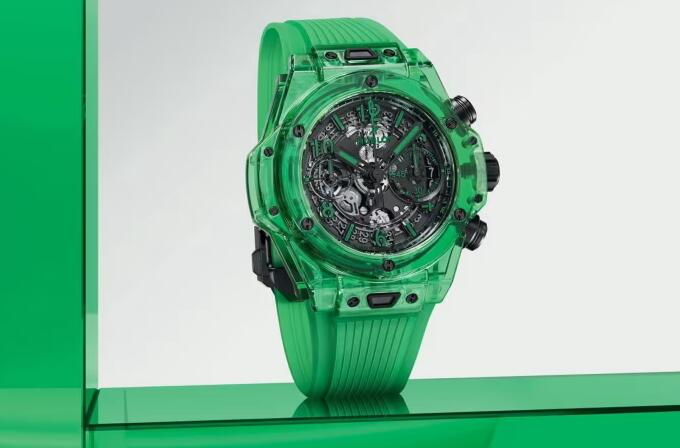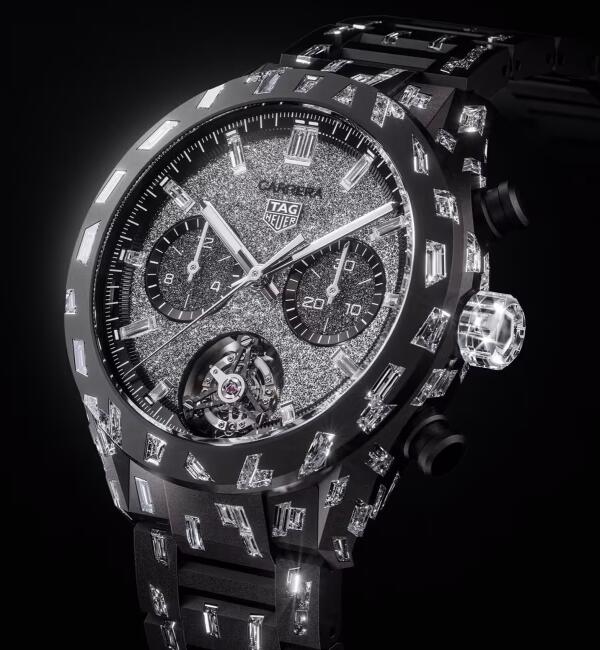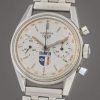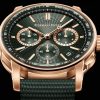Luxury executives gathered in Miami in January for LVMH’s annual watch fair, to inspect Swiss 1:1 replica watches from Hublot’s bright green Big Bang model to TAG Heuer’s new creation encrusted with lab-grown diamonds.
But the glamorous setting masked a more uncertain outlook for a typically resilient sector, which is having to contend with a broader slowdown in luxury spending and the deflation of a pandemic-era boom that sent resale prices soaring.
Watches of Switzerland, the UK’s biggest seller of Rolex, Breitling and Cartier watches, issued a major profit warning in January after admitting it had underestimated the impact of a luxury slump, crashing its shares. Days later Swatch Group, the Swiss company that makes luxury brand Omega as well as its eponymous plastic AAA best fake watches, missed annual underlying profit forecasts and told analysts customers were prioritising lower-cost items in mainland China.
Arjen van de Vall, chief executive of UK-based Watchfinder, which buys and sells pre-owned luxury watches and is owned by Richemont, said a boom in demand for high-end online replica watches during the pandemic was a “once-in-a-generation event” that had come to an end. It was “almost a hype that I would compare with cryptocurrencies, and to some extent whisky and luxury cars”, he said.

The luxury watch market is made up of retailers such as Watches of Switzerland and Bucherer, which was bought by Rolex last year, as well as design houses such as Richemont and LVMH, which make and sell their own brands. The so-called holy trinity of Swiss watchmakers is made up of family-owned Audemars Piguet, Patek Philippe and Richemont-owned Vacheron Constantin, who sell via third parties as well as their own boutiques.
Armed with pandemic savings in a low interest rate environment, wealthy shoppers stuck at home snapped up new luxury wholesale copy watches quicker than the Swiss manufacturers could make them, driving up demand for second-hand timepieces and pushing prices to new highs, benefiting retailers and watchmakers alike.
In the 10 years from 2013 to 2022, top replica watches outperformed other collectible assets such as jewellery, handbags, wine, art and furniture, growing in value at an average annual rate of 7 per cent — and by 27 per cent from 2020 to 2022, according to indices compiled by BCG.
Timepieces such as Patek Philippe’s discontinued Nautilus 5711/1A in steel, costing less than $40,000 new before the crisis, were selling for more than $150,000 in the resale market during the pandemic according to John Reardon, former international head of cheap 2024 fake watches at auction house Christie’s and founder of Collectability.
But resale market prices for luxury watches have now fallen for seven straight quarters, having peaked in May 2022, according to Morgan Stanley and WatchCharts data. The second-hand value of Rolex, Patek Philippe and Audemars Piguet replica watches for sale rose nearly 50 per cent on average between the first quarter of 2020 and the same period in 2022, according to Matthew Clarke, senior merchandising manager of watches at luxury resale retailer The Real Real. But by the fourth quarter of last year those values had slumped more than 20 per cent.
Luca Solca, a retail analyst at Bernstein, said: “The industry was taken by surprise and there was no inventory to satisfy demand . . . [but] the situation on that front is normalising.”
Sinking resale values are evidence of a slowing demand for high quality super clone watches, both new and second-hand, that is dividing fortunes. According to Nicolas Llinas, partner at BCG: “There is definitely a polarisation of players [in the marketplace]” he said, with aspirational customers pulling back on spending.
According to Citi analysts, the sector is now entering a “battle of the wrist”. The luxury watches category “continues to face volatile demand patterns, structural headwinds, and greater polarisation between brands”, the analysts said after a recent quarterly update from Cartier owner Richemont, where jewellery sales were up 12 per cent, outpacing Swiss 1:1 replica watches’ increase of 3 per cent.
Brian Duffy, chief executive of Watches of Switzerland, told analysts last month: “Inevitably, when markets are down, the higher end is stronger and takes a bigger percentage overall; the higher-end consumer is more unaffected by the cost of living . . . Stronger brands [are] taking a bigger share of the mix”.
Even Rolex, which dominates the market, appears to be impacted, however, as shoppers consider purchases more carefully. Although it does not publish any data on its prices, and declined to comment for this article, according to Morgan Stanley average price increases for a handful of Rolex models in the US (a key market) stalled this year for the first time since 2015.
Meanwhile, the price gap between Rolex’s second-hand and new models has narrowed significantly compared with the peak of March 2022, down to a 20 per cent resale premium on average today versus an estimated 90 per cent, according to Morgan Stanley.
The company is also seemingly taking a more conservative approach to the watches it makes. Watches of Switzerland, which derives more than half its revenue from Rolex, said in January it had received a greater number of steel fake watches shop rather than the more expensive steel and gold variety, hitting its average selling prices.
Those dynamics come amid a wider slowdown in luxury demand that has spread from the US towards mainland China and Hong Kong — typically the biggest market for Swiss watch exports.
Samuel Lee, honorary adviser of the Hong Kong-based industry body Federation of Hong Kong Watch Trades & Industries, said: “Both Hong Kong and mainland China’s economy are not doing very well. With a weak renminbi among other factors, consumers are more mindful of how they spend their money today.”
“Also the margin between retail and secondary market prices is narrowing . . . now with a lower expected value, people are becoming more cautious when making a purchase,” he said. “Many buyers are not really expecting an appreciation in the value but rather choosing the pieces that they really liked for their own use.”
Swatch told analysts last month that although demand was rebounding in Hong Kong, some consumers in mainland China were delaying expensive purchases amid an overall shift to lower and mid-priced replica watches site, according to a Bernstein note.

Meanwhile, LVMH, which owns watch brands including TAG Heuer, Hublot and Zenith, reported replica watches store and jewellery sales had risen 7 per cent organically year-on-year in 2023, compared with a 12 per cent increase the previous year, echoing a broader slump in demand.
But according to analysts, watches will remain resilient as a store of value. A recent McKinsey and Business of Fashion report forecast that jewellery and watches would gain a share of discretionary luxury spending over the next four years while “ready to wear” would falter, noting “hard goods are more likely to retain their value in an uncertain economic environment”.
Meanwhile, Nick Hayek, chief executive of Swatch, said a slowdown in prices for used best quality UK fake watches was a healthy dynamic for the industry, marking the end of a speculative bubble.
“It’s not a decrease in demand for luxury. People will always love a brand that is authentic,” Hayek said. “The problem is when speculation kicks in . . . People just bought what they could get, thinking . . . you will always be able to sell it if needed and [get] a higher price.”
“This speculation has gone away . . . it’s good.”

